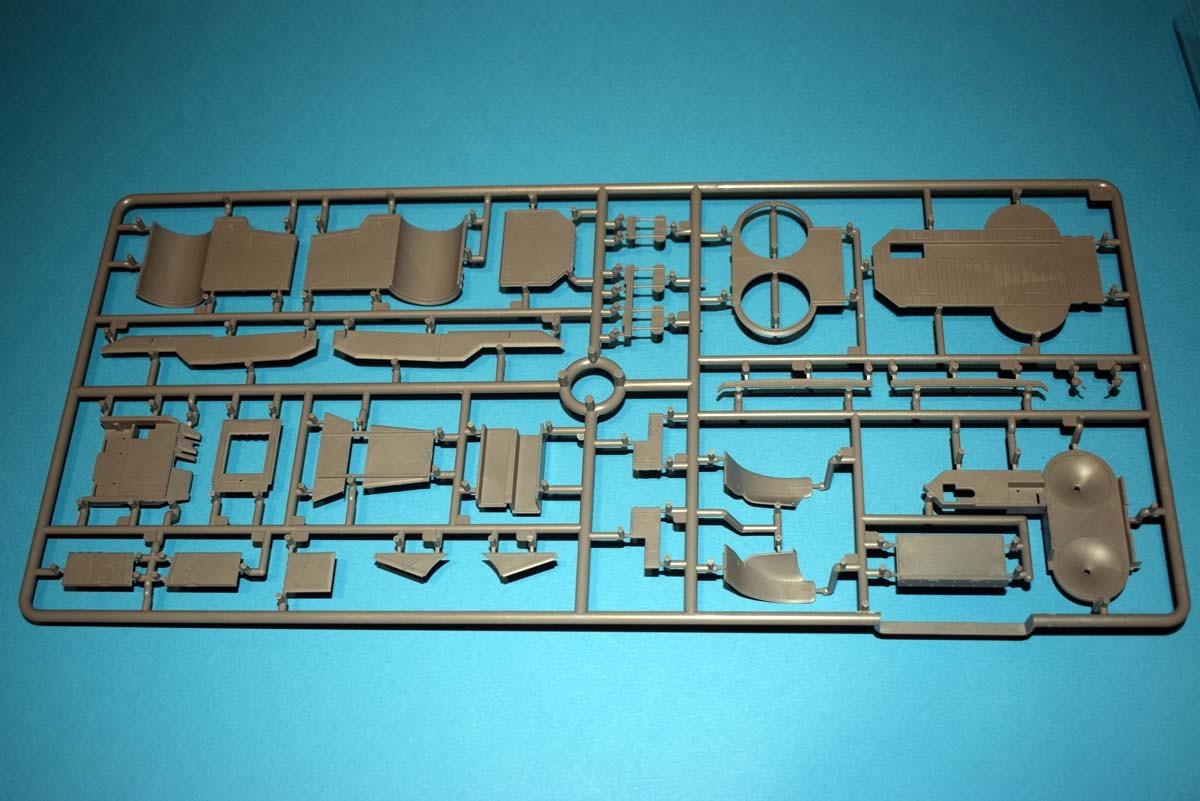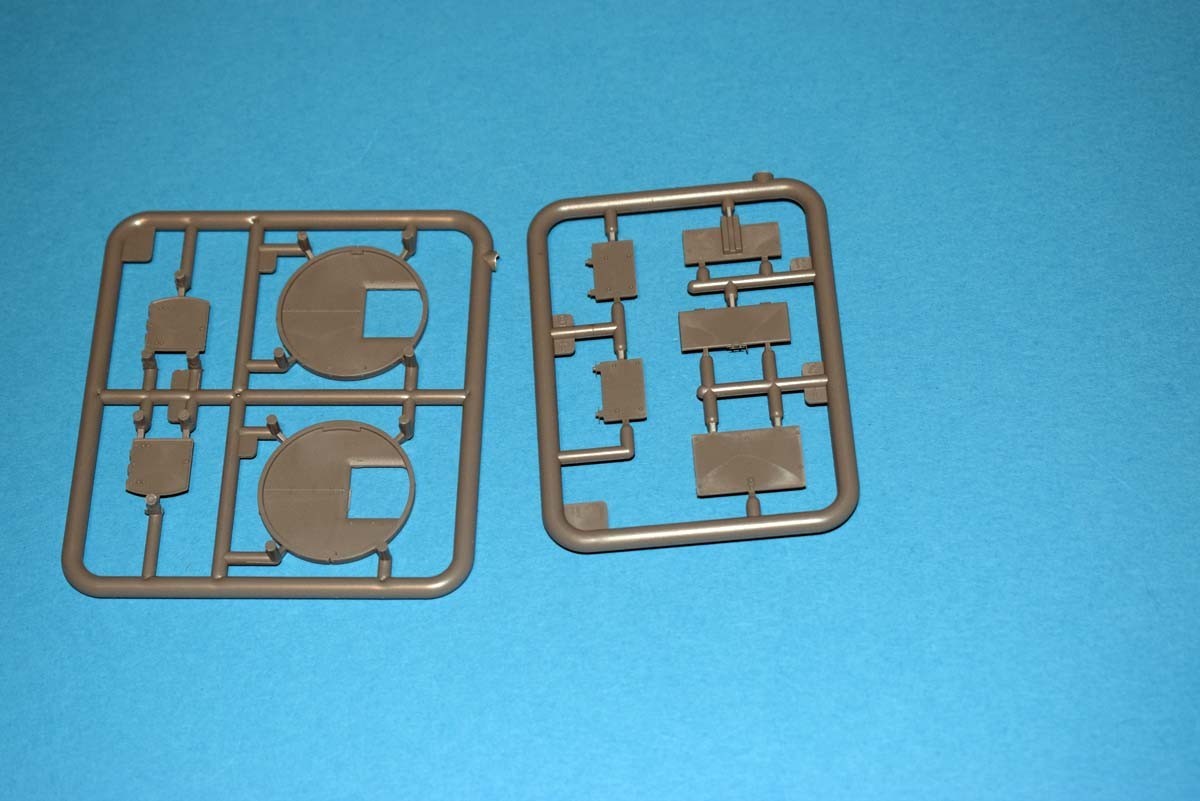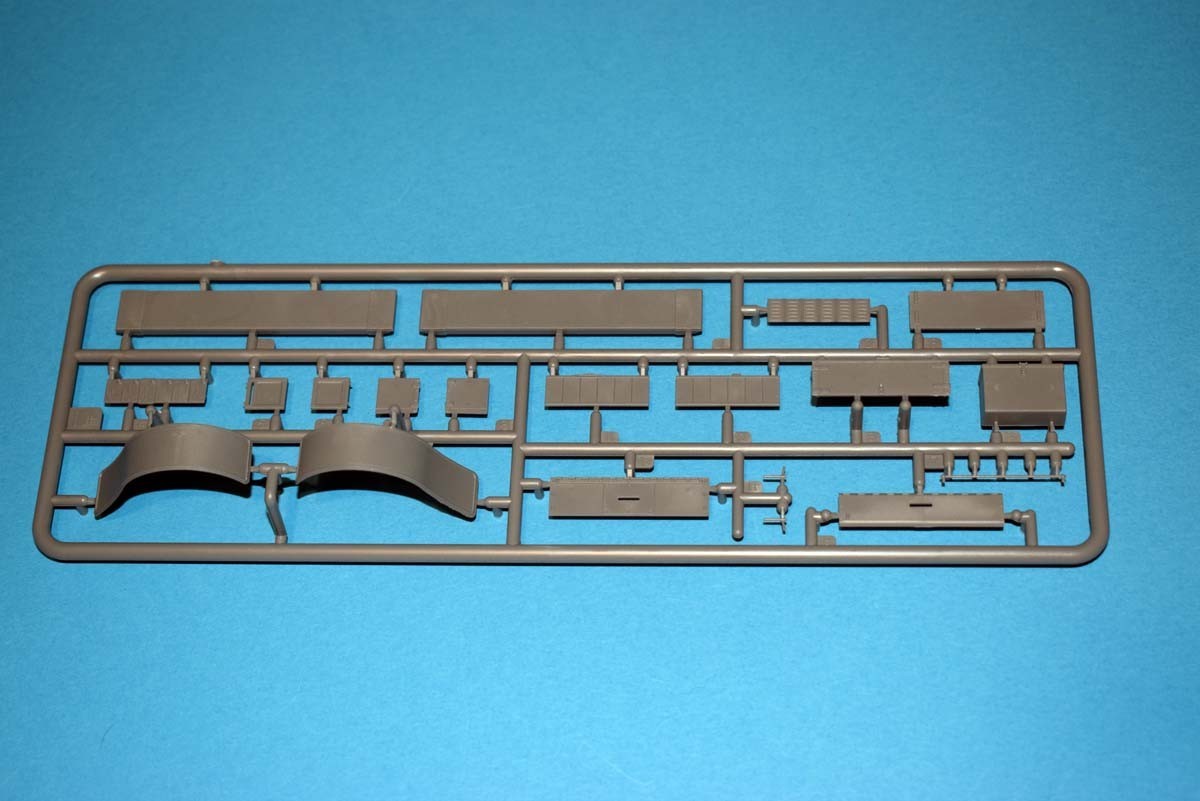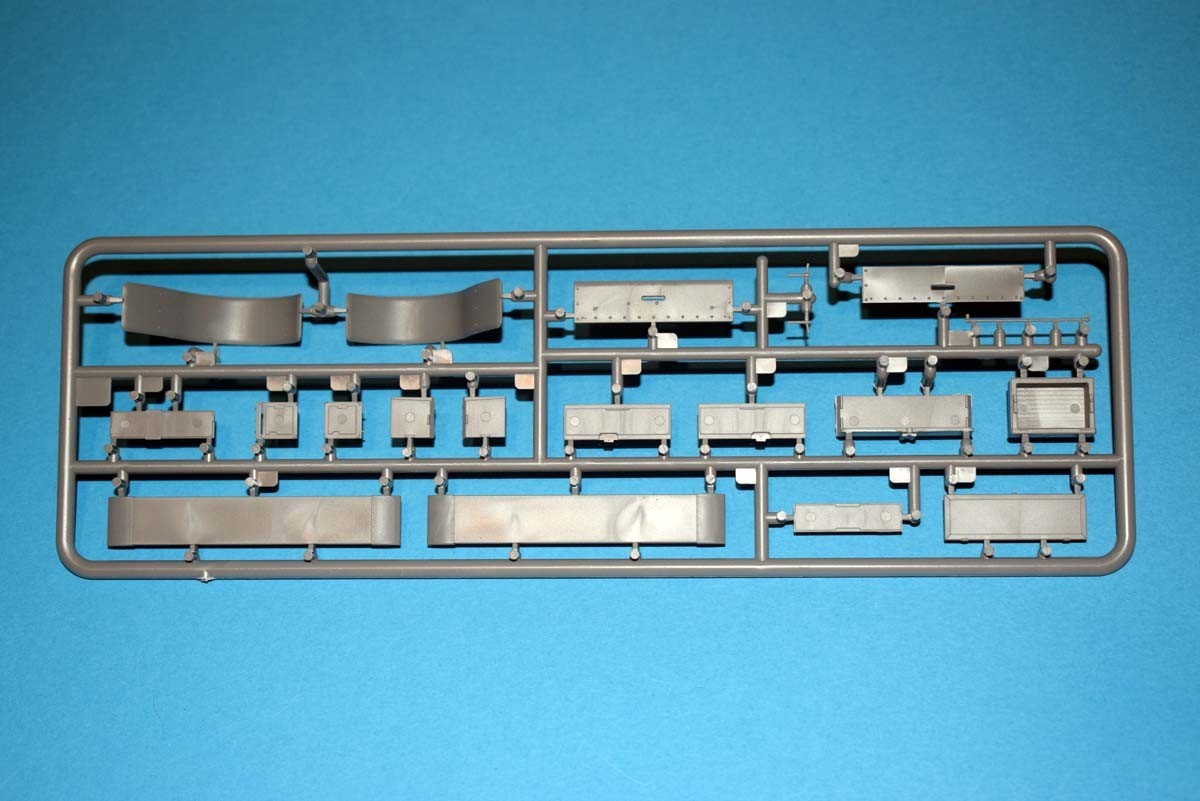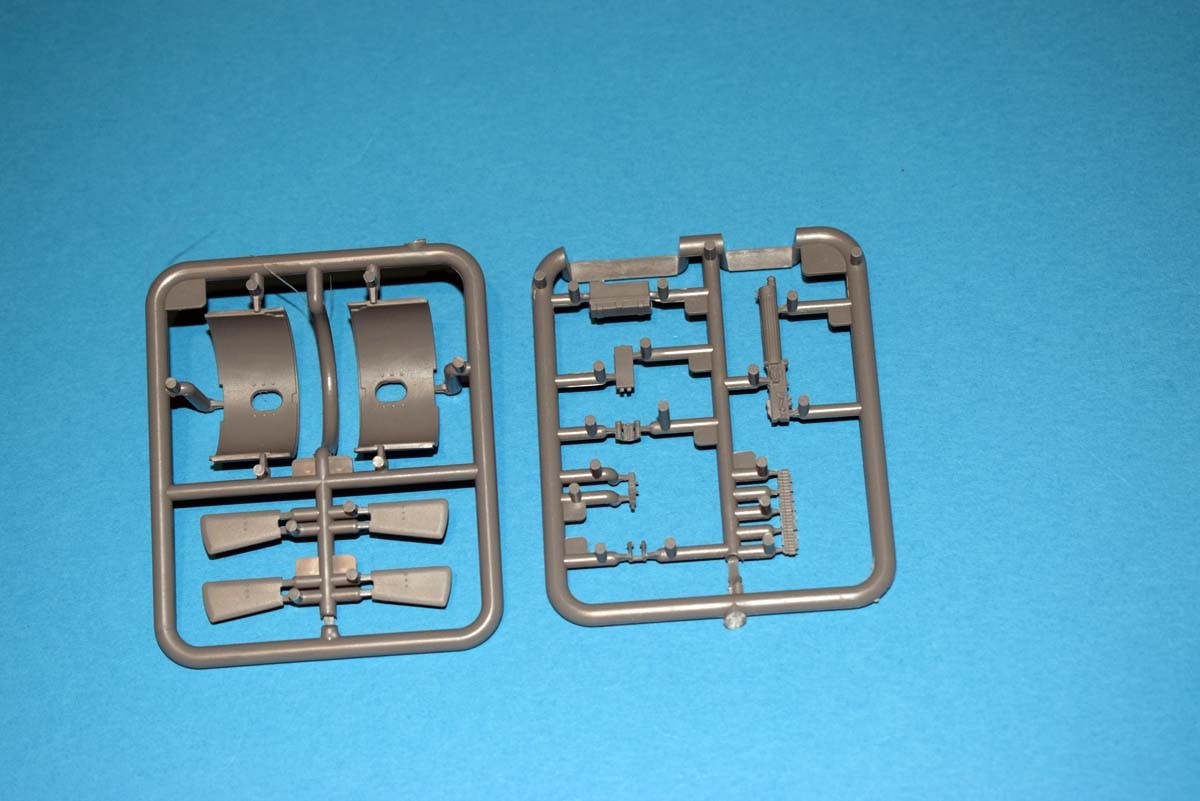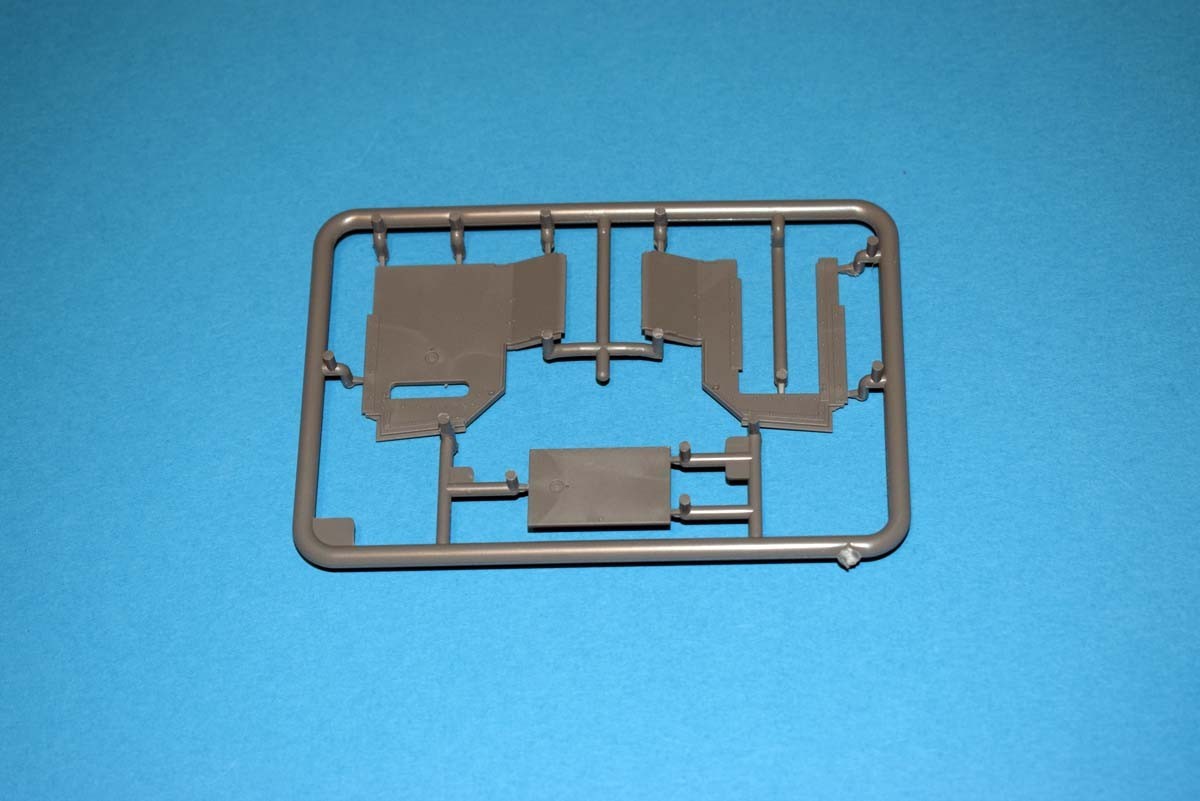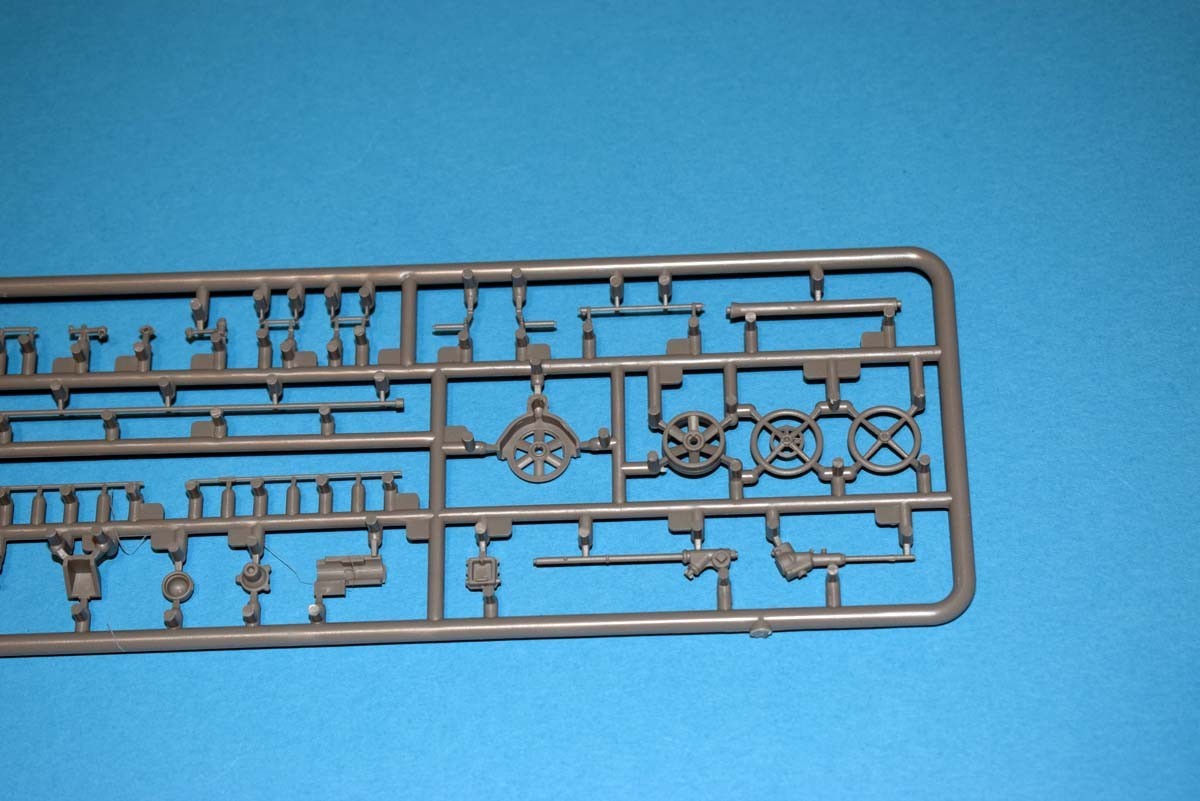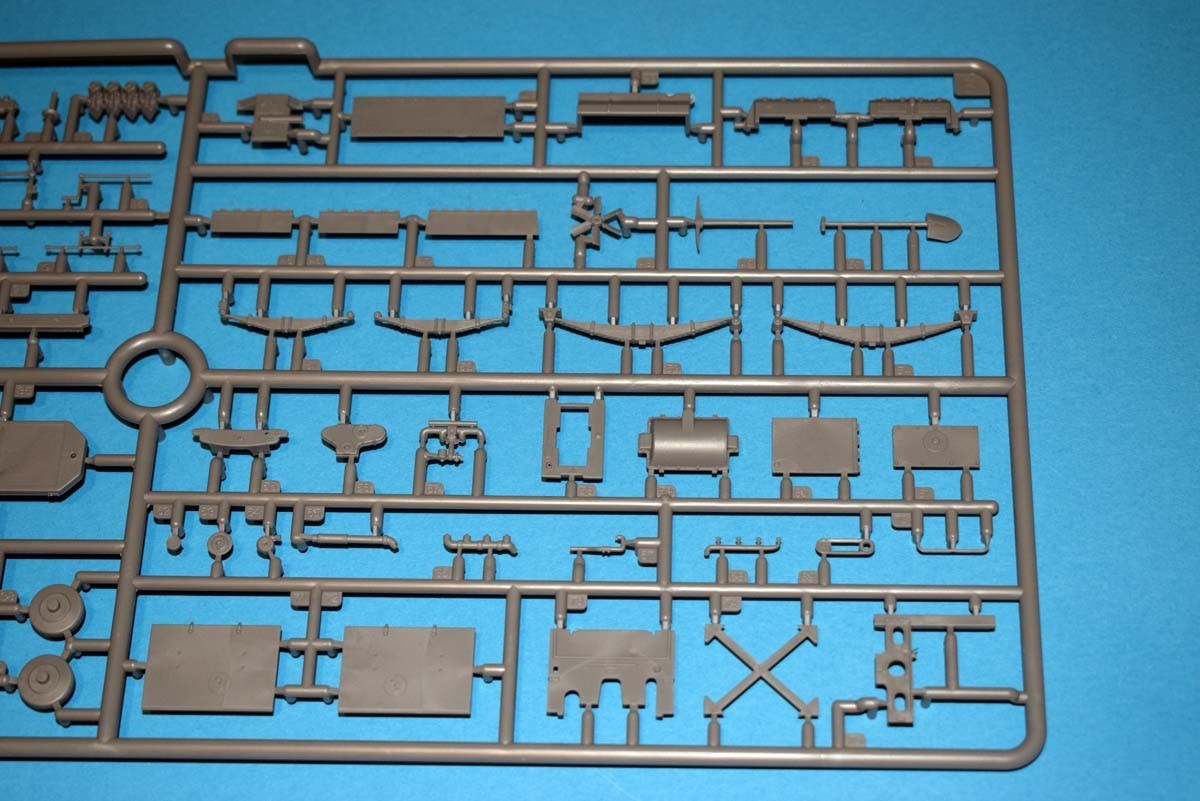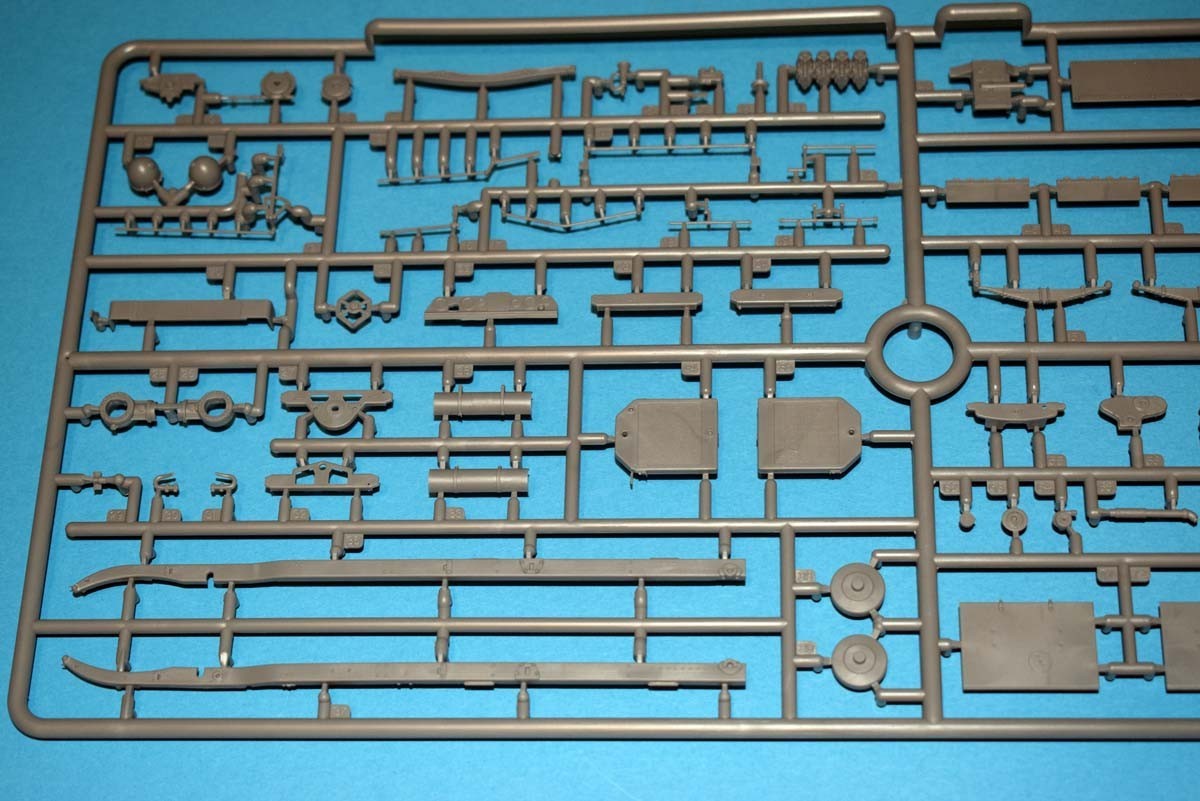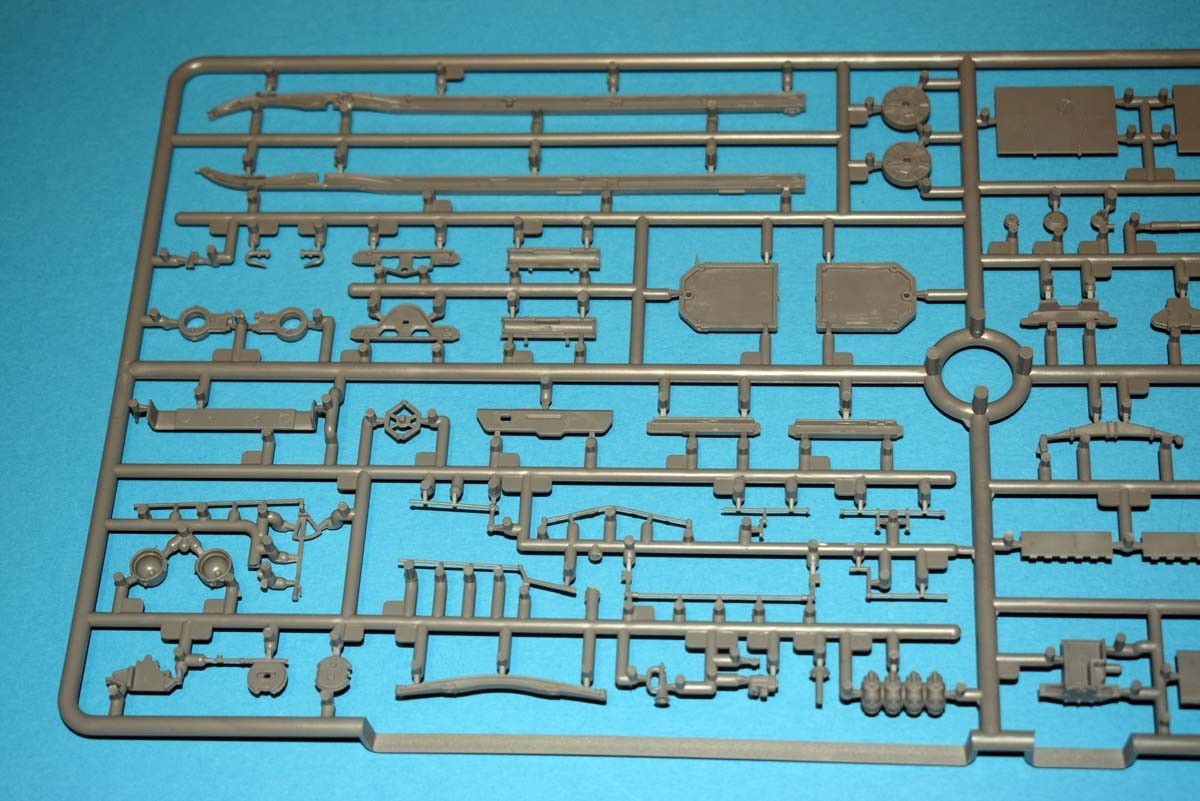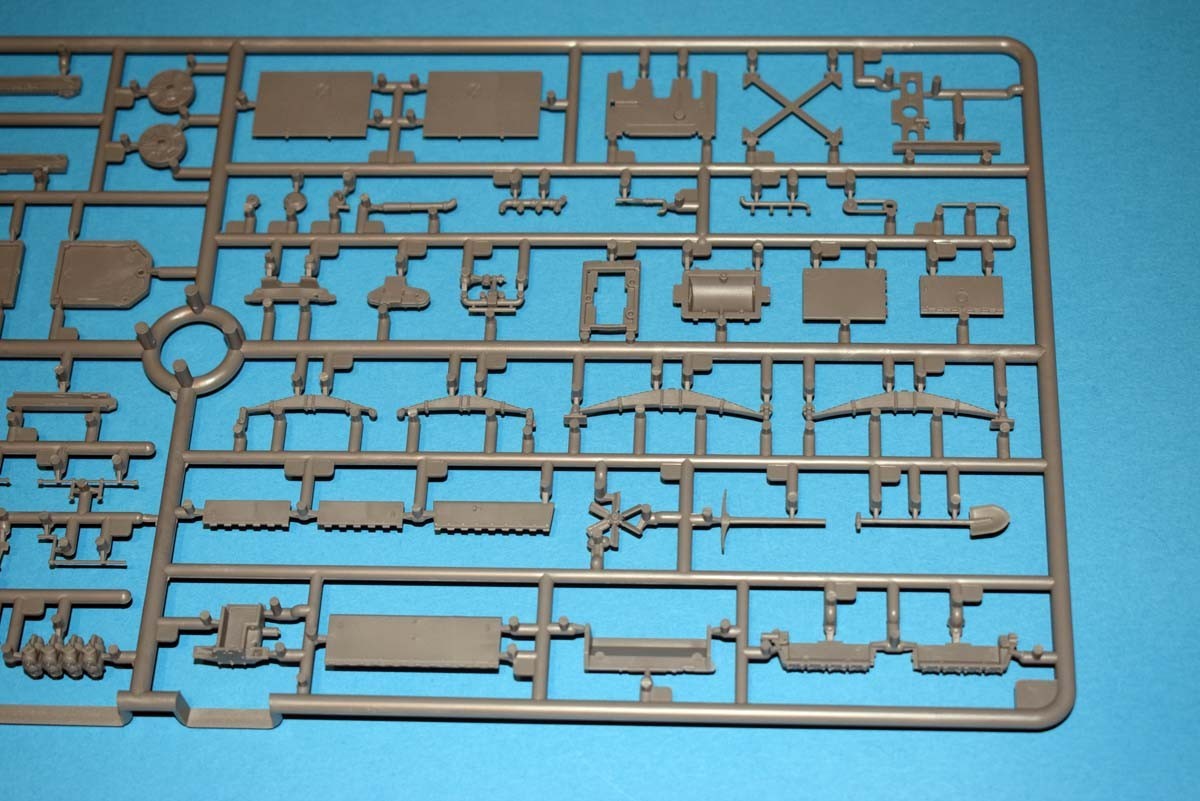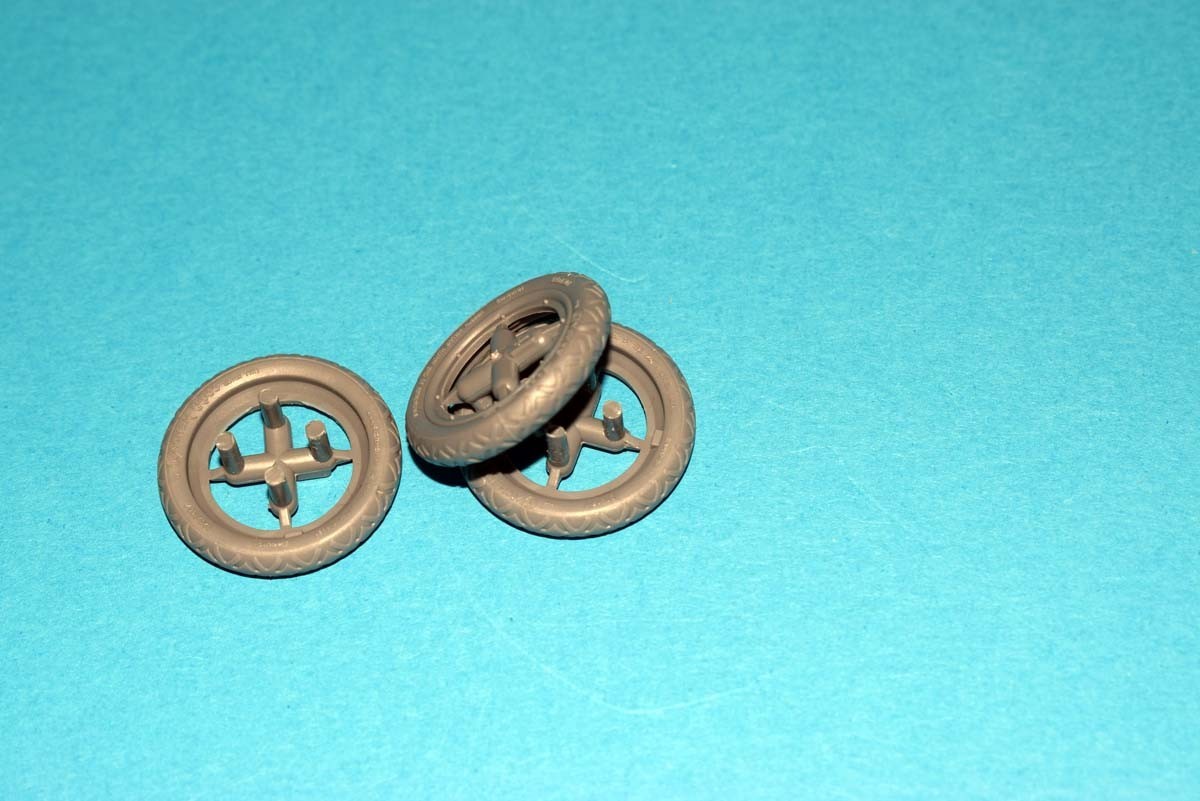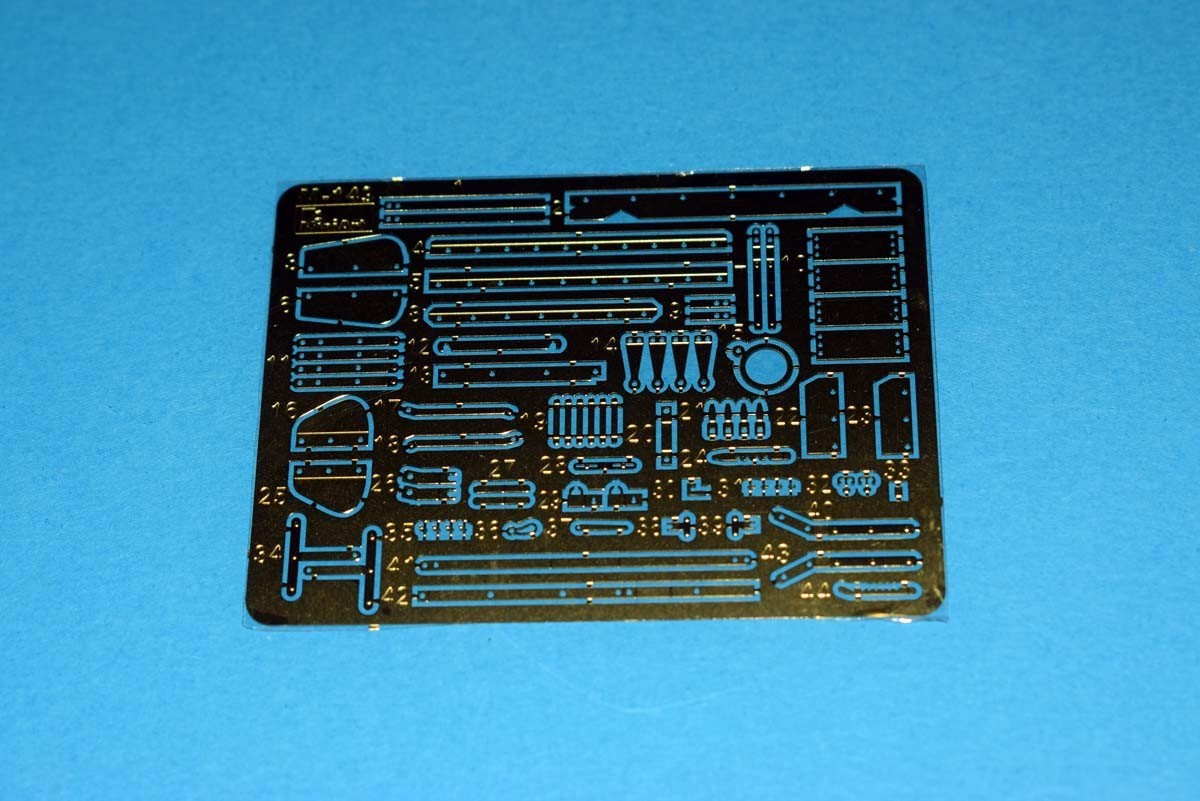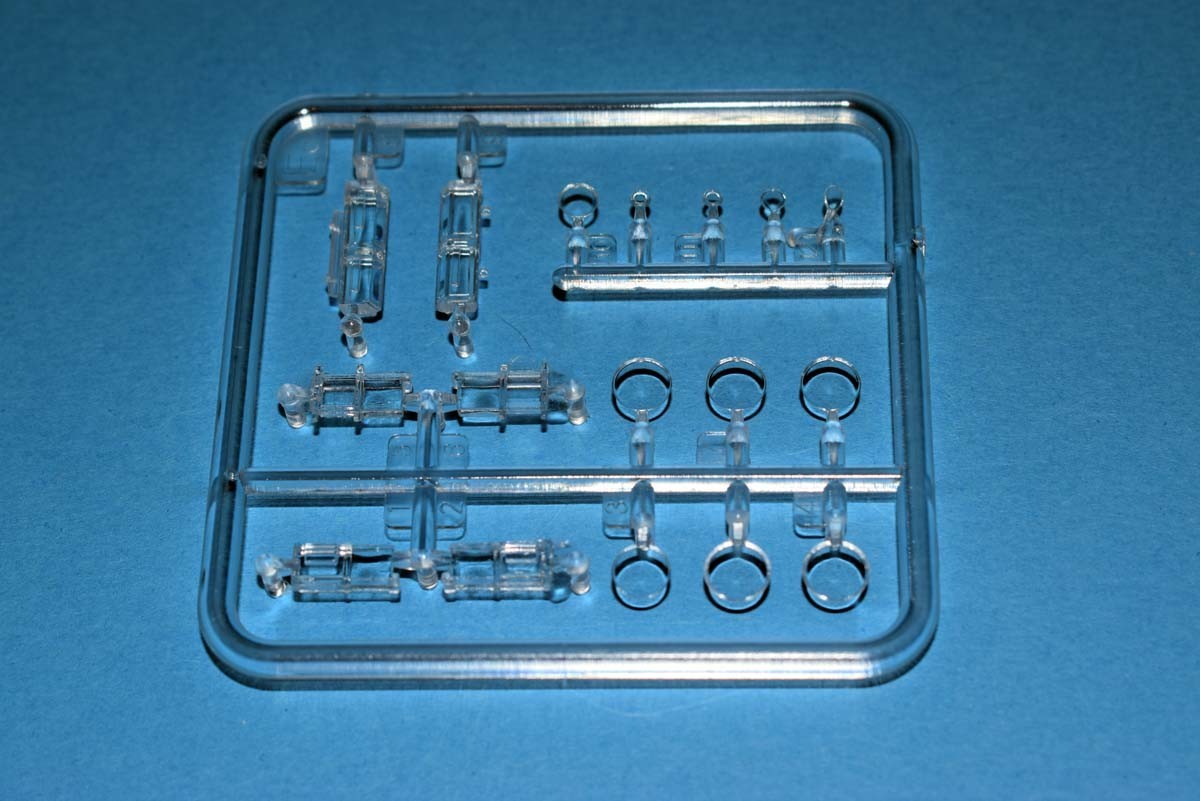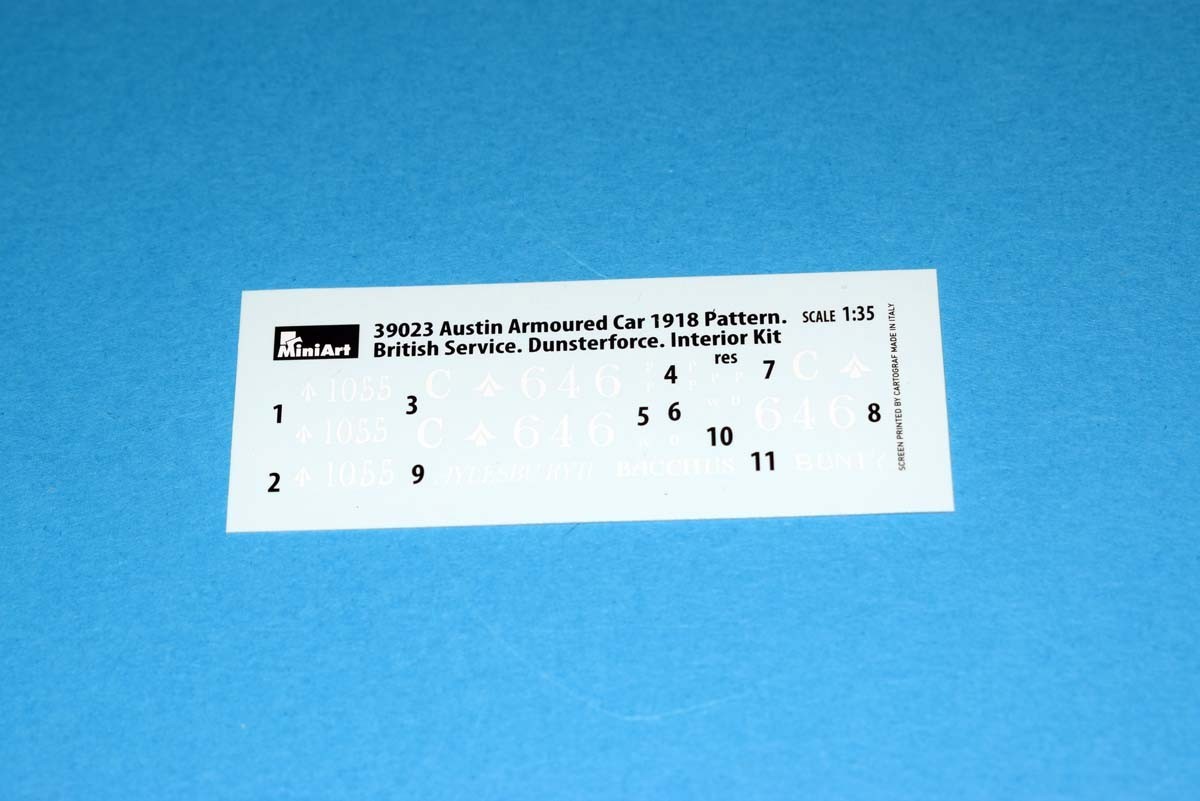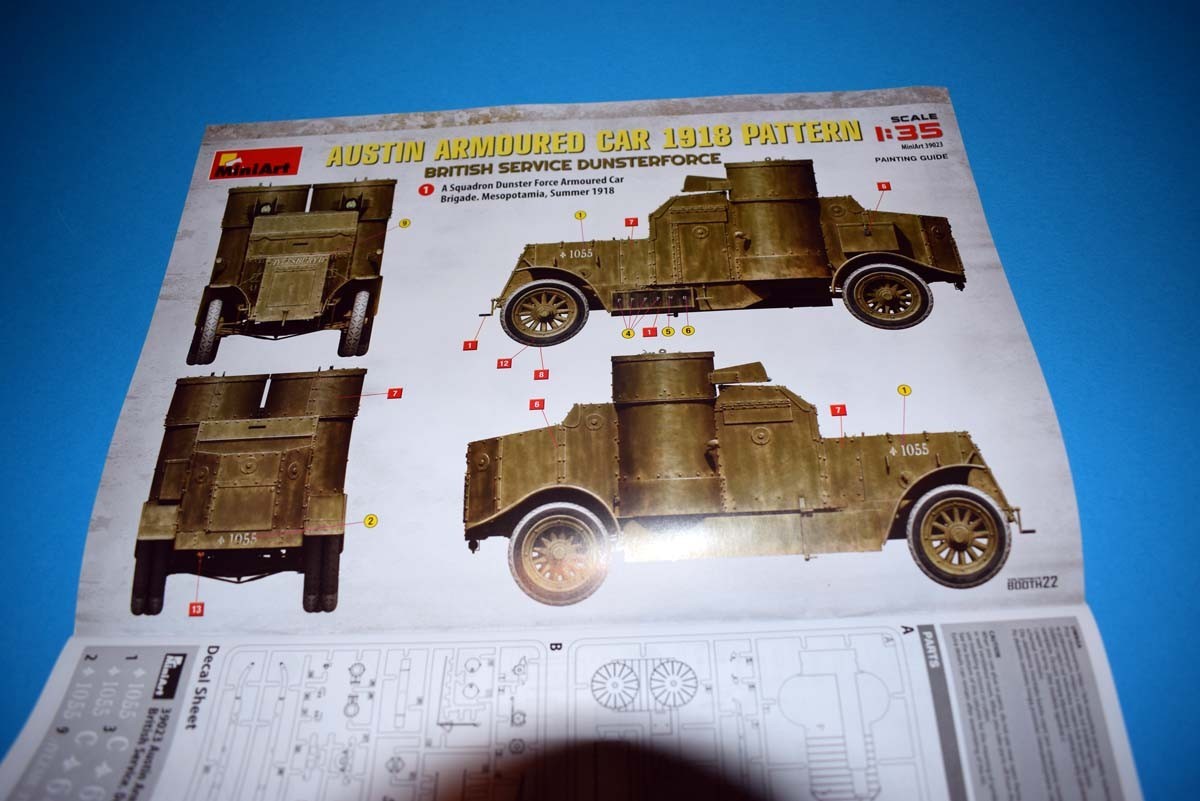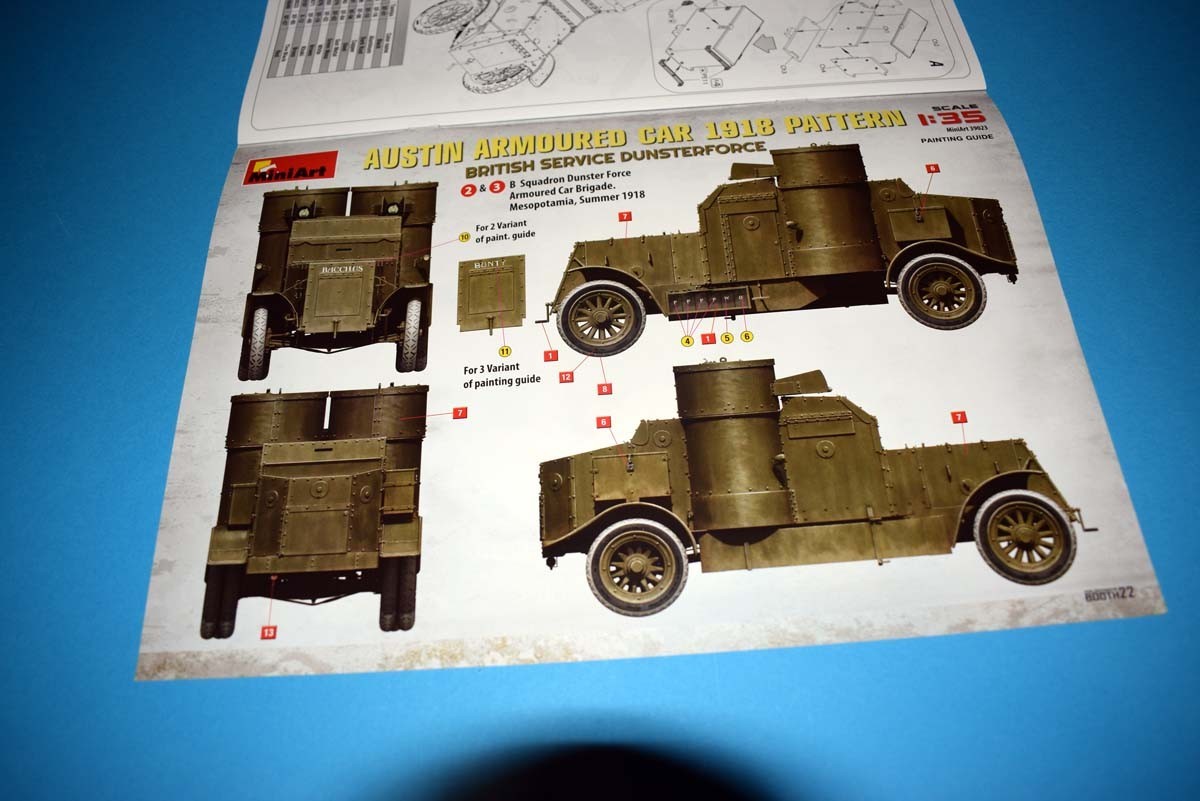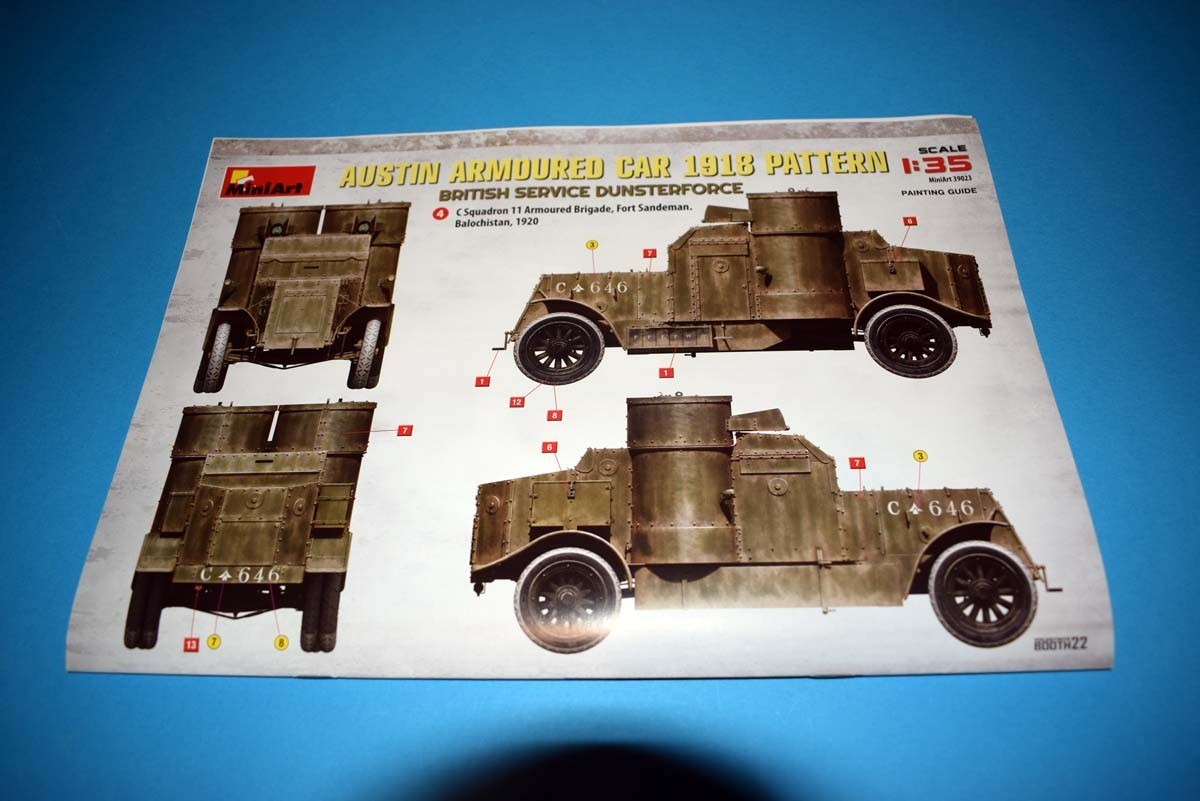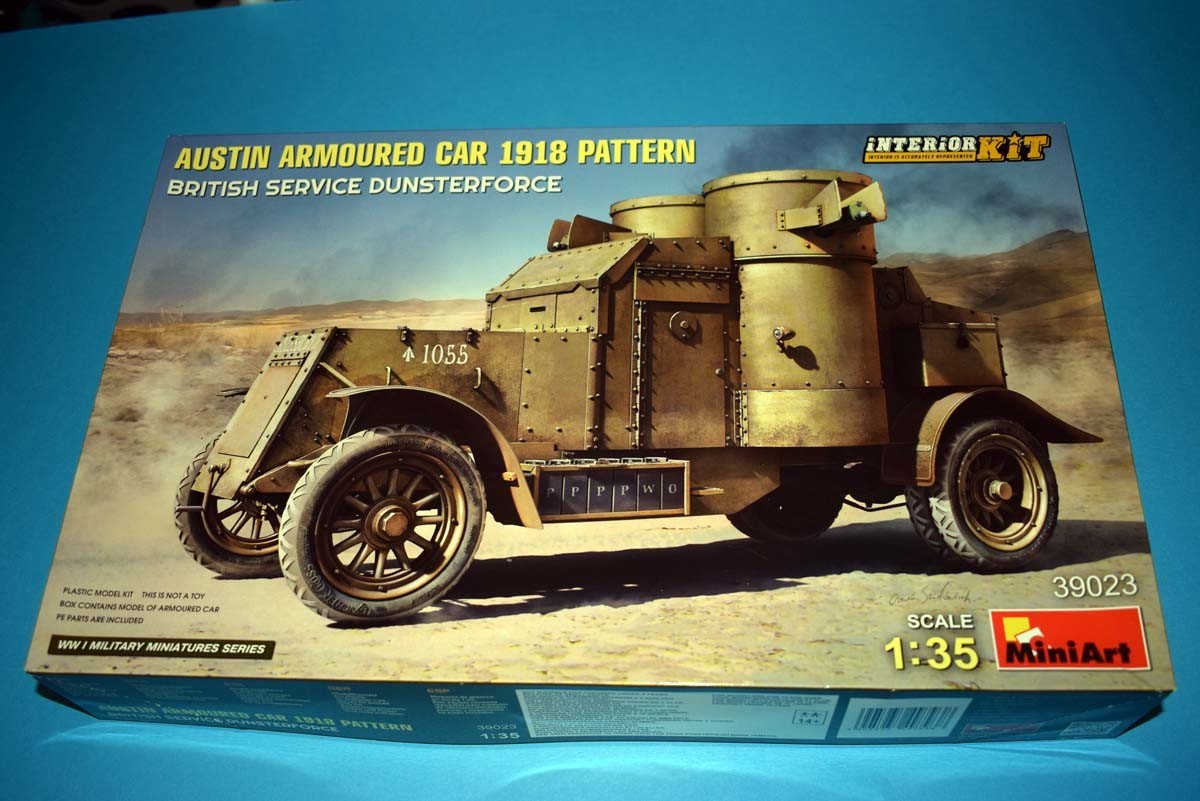
Introduction
The Austin armoured car 1918 Pattern was the final result of the experience gained from the previous models in the battlefields of Europe during World War 1. The 3rd series of vehicles used a 1.5 ton chassis as opposed to the previous chassis used on the 1st series of vehicles and this was retained on the 1918 version; I have heard that it was strengthened further but cannot find any details on this. The thicker armour did a better job of protecting its occupants. The improvements here that specifically identify this offering as a 1918 pattern vehicle are limited to the twin rear wheels; the Vickers machine gun as opposed to any other weapon is not an identifying factor for this vehicle.
Review
This offering from MiniArt arrives in the usual packaging of a cardboard tray with a separate card lid with the artwork on it. Inside there is a substantial instruction booklet and a single plastic bag containing all of the plastic for the model plus the clear sprue and decals in a bag of their own and packed along with the other parts. In this example no obvious damage has been caused to any elements of the model; while no damage has been done to the model from what I can see it does leave small and fragile parts exposed to be knocked loose or damaged. There is a sheet of photo etch included with this release and that is protected by a card envelope in the packaging. The gates are of a reasonable size and not excessive in number but some parts are so fine that removal without damage will require extreme care.
The chassis of the model is a multi-part offering that has enabled MiniArt to provide a great deal of detail that otherwise would not be possible. This approach does mean that the modeller needs to take care to insure that the chassis is assembled square; I advise that the chassis is assembled on a cutting mat with a square grid present. A full engine and gearbox are provided and it is very impressive in my opinion due to some very crisp detail. I will say that some of the mating face locations are a pain to get good access at and a number of very small photo etched parts are used which could be problematic for those like me whose eyesight is not what it was and large hands that are not as steady as they use to be. Beyond a small amount of wire being needed for detail I believe all is good here. A particularly nice touch is that the foot pedals attach to the actuator rather than a spot on the floor. Moving to the rear drivers post and the foot pedals there are supplied with plastic actuator rods to the front and for the modeller who wants to add further detail MiniArt has provided detailed parts for use with metal rods and provided all of the needed information. MiniArt is really coming on leaps and bounds with what they provide.
The axle is quite industrial at the rear, but has still been provided with some very nice detail that will please the eye. The front axle is indicated as being for straight ahead only, but looking over the parts I believe showing the front wheels turned only requires the modeller to set the angle of the steering joint. There is some further very fine wire detail that I believe replicates the brake pipes; I feel that this approach by MiniArt brings the potential for super detailing into the realm of anyone willing to try. The wheels are the wooden spoke offerings which is correct for the provided model (the modeller wanting to build something a little later need only add metal wheels or plates to protect the spokes for vehicles used between the wars). Unlike the series 3 vehicles all of the vehicles referred to as 1918 pattern had twin rear wheels.
Vehicles of this time period did not have the comfort of the occupants paramount in their minds and so the interior is functional rather that comfortable. The floor of the vehicle is wooden planks with some metal elements and so driving over a grenade would not be a good choice. The floor at the front driver’s position slips onto the pedals and then home, so take care. A similar situation at the rear driver’s location but a steadier hand will be needed. Seating for the five man crew is basic with the gunners getting a bench seat next to the rear driver’s position. The front two and single rear seat are provided and again these look basic, but at least these have some provided padding on the back and seat which MiniArt has provided with a very good natural look.
The armour plate is pretty bare on the inner face beyond some riveting detail; the modeller who wants to add a personal touch could add a page from a suitable period magazine or even a drawing by one of the crew on the walls. The Vickers machine guns in the turrets have good detail and are the water cooled jacket type, but no water container has been provided and I have not been able to track down what the score is with this feature; my head tells me a water container should be present and so if you know please advise. These are mounted on swivels and the gunner given one of the shaped metal seats as seen on old tractors mounted on the swivel. The ammunition for the Vickers is a canvas belt that is reloaded rather than disintegrates during use. Displaying the belt accurately will require some heat I feel to get the correct relaxed look. The guards on the exterior covering each side of the guns obstructs view and someone targeting the gunners positions only need wait for the correct angle to present itself. This feature also means that the effectiveness of the gunners is reliant on crew information to them.
The armoured exterior is basically metal sheet riveted together and so you have that detail replicated. The only curves are the turrets and mud guards. The engine radiator has a guard protecting it that could be lifted if not in battle. Vision was provided for the driver and commander via vision slots and both front and rear guards could be lifted to improve vision when conditions allowed. The gunners view would I believe have been awful as smoke would obscure vision forward when firing the weapon as stated previously.
The finishing options for this release are:
A Squadron Dunster Force Armoured Car Brigade, Mesopotamia, Summer 1918.
B Squadron Dunster Force Armoured Car Brigade, Mesopotamia, Summer 1918.
C Squadron 11th Armoured Brigade, Fort Sandeman, Balochistan, 1920
Conclusion
Another great model offering of the Austin Armoured Car that served across the globe and with more countries than I realised. The model is well laid out with display of the great interior and engine being the difficult part which can be partly overcome by displaying one of the turrets off of the model. This offering is another beautiful model with a very high degree of accurate detail that does not leave much room for improvement. The dirty bits of the model are very nicely replicated and beyond some wire you have a great feature of the model. The underside is another great aspect if somewhat hard to display. Another great release but how about some crew figures? I question the lack of water cooling for the Vickers MG’s and so please provide information if known.

